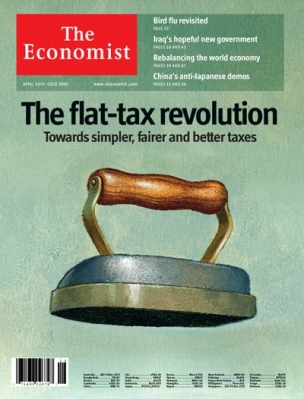The New York Times (1851- ), also known as the Grey Lady, is a daily newspaper that comes out every morning in New York City. It does not have the most readers in the city – it is aimed at those with a good education – but it is by far the best and most serious of the lot. The New York Times, in fact, is one of the top newspapers in America, if not the world.
It sees itself as the newspaper of record and reports political and world news seriously and in depth. “All the News That’s Fit to Print,” as it says at the top of the front page.
The New York Times is a left-wing newspaper. While it does attempt to report the news fairly, it is obvious to most Republicans (as well as those on the far left) that politically it sides with the Democratic Party.
The newspaper’s political bent is invisible to its reporters and writers and its readers on the left because they all have the same left-wing view of the world. To everyone else it is as plain as day.
The New York Times does not just side with the Democrats, it sides with the Democratic Party establishment itself. For example, in 1988 when Jesse Jackson ran against the party establishment, the numbers reported in the Times showed that he would do well in the South. Yet the Times read these same numbers to prove he would do poorly!
But it is not quite as simple as all that.
Like a lot of newspapers, the New York Times ordinarily does not bite that hand that feeds it: it is soft on those who feed it news, be it the police, large companies or the government. That means it is soft on sitting presidents, even Republican ones.
For example, in 2003 it did not originally question whether weapons of mass destruction existed in Iraq, the reason President Bush, a Republican, gave for war. Those questions only came later when it was too late.
On the other hand the New York Times has printed government secrets on occasion. The most famous example was in 1971 when it printed the Pentagon Papers. These were papers taken out of the Pentagon that detailed what the military had secretly known about the Vietnam War. It showed that the government had been lying to the public.
World news in the Times largely follows American foreign affairs. This leaves China, India and Africa heavily underreported.
New York City north of 96th Street and east of the East River – where most New Yorkers live – is also greatly underreported. I once saw a picture of my neighbourhood! But the picture was taken from a police car.
The New York Times first appeared on the web in 1995. It looks just like a newspaper put on a website – a perfect example of shovelware. It even has page numbers!
In 1997 the Grey Lady became a bit less grey: she started printing pictures in colour.
– Abagond, 2006.
See also:
- New York Times – the website
- The world according to the New York Times
- The Pentagon Papers
- The press
- How the press is soft on racism – has an example from the New York Times.
- shovelware – what they are on the Internet
- New York – their city
- Democrats – their party
- reporters
- Lola Ogunnaike – their in-house “Cool Black Chick” from 2002 to 2007
- Raymond Bonner
- James LeMoyne
- Nate Silver
- Michelle Malkin – loves to show how left-wing they are
- newspaper


